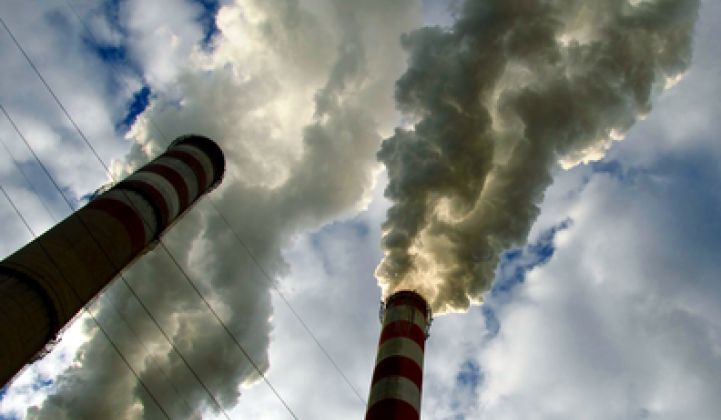As the bad climate news continues, and states wrestle with the devilish details of EPA's new carbon rule, one has to wonder: is there a better way to fight global warming?
A way that goes beyond power plants? One that penalizes carbon emission “offshoring” without relying on a new global treaty? That grows the economy and creates more jobs? That is supported by small-government conservatives? That GTM readers can enthusiastically support?
Yes, yes, yes and yes.
It’s remarkably simple: a revenue-neutral carbon fee and dividend, such as that proposed by the organization I'm affiliated with, Citizens’ Climate Lobby.
Here’s how it works: fossil fuel companies pay a pollution fee based on the CO2 emissions capacity of the fuel they extract or import. The fee starts at $15/ton and increases by $10 every year until climate goals are reached. Because it’s applied “upstream” in the economy, the fee affects pricing and usage in all sectors, not just electricity generation. It creates a uniform and steady price increase that leverages the power of the entire marketplace.
The carbon fee and dividend (CFD) concept is designed to discourage nations like China from producing cut-price CO2-intensive goods at the expense of American businesses and the climate. It charges WTO-compliant import fees on products from countries without comparable carbon pricing. These border adjustments help level the global playing field, while inducing other countries to adopt comparable carbon pricing.
The heart of CFD is the dividend; simplicity is its key. Every month, 100 percent of fee revenues are distributed to American households in equal payments based on household size. There’s no need for complex formulas or processes to allocate dividends based on income or energy use. This maximizes transparency and minimizes administrative costs.
The dividend's gradual increase and flat-rate allocation mitigate the cost of the financial impact of rising carbon prices. This helps households with lower incomes, whose carbon footprints are generally below the national average. Under the Citizens' Climate Lobby (CCL) proposal, an estimated two-thirds of families would break even or gain financially.
The dividend also gives people the buying power to switch to lower-emission alternatives. Individuals, inventors and investors all have a predictably growing financial incentive to shrink carbon footprints. With the fee “stick” and the dividend “carrot,” CFD leverages the power of the entire marketplace, without the political volatility of regulation or subsidies.
CFD’s dividend has another important impact: it actually boosts the economy. Regional Economic Modeling, Inc. (REMI), a prestigious non-partisan economic modeling firm (whose clients range from the NFIB to the NEA), produced an in-depth study of CCL’s CFD proposal. After ten years, CFD would yield a net 2.1 million increase in jobs while reducing CO2 emissions by 33 percent, compared to the baseline case. After twenty years, that jumps to 2.5 million jobs and a 52 percent overall CO2 reduction.
This defies conventional wisdom. Why haven’t previous carbon tax studies found such positive impacts? REMI’s study is the first in-depth, region-by-region modeling of complete revenue-neutrality, with a 100 percent dividend and border tax adjustments. Revenue-neutrality in particular is critical, especially for public acceptance. British Columbia’s successful and popular carbon tax is revenue-neutral. Australia’s recently repealed carbon tax was not.
REMI found that after ten years of CFD, average annual net incomes would rise by more than $500 per person, accounting for cost-of-living increases. By putting more money in the pockets of people likely to spend it, CFD would stimulate job-creating investments. The expected job losses in the fossil fuel industry are more than offset by growth in manufacturing and construction (e.g., wind, solar, efficiency in buildings and transportation), as well as in retail and health services.
Revenue recycling is also a requirement for success in Congress. Conservatives who have pledged to oppose new taxes find this free-market approach preferable to EPA regulations, counter-subsidies and federal industrial policy. George Shultz, a CFD supporter and CCL Advisory Board member, explains: “It’s not a tax if the government doesn’t keep the money.”
There is movement on Capitol Hill, too. This June, I joined 600 CCL colleagues to lobby Congress, answering questions about CFD and the REMI study. It was my second lobbying trip. A year ago, Republicans argued about the reality of anthropogenic global warming. This year, they wanted to learn about our free-market solution.
Next year, who knows? As more people discover and support CFD, we may bring good climate news sooner than any of us ever imagined.
***
Bruce Hagen is the Sonoma County, California chapter co-chair of Citizens' Climate Lobby.



